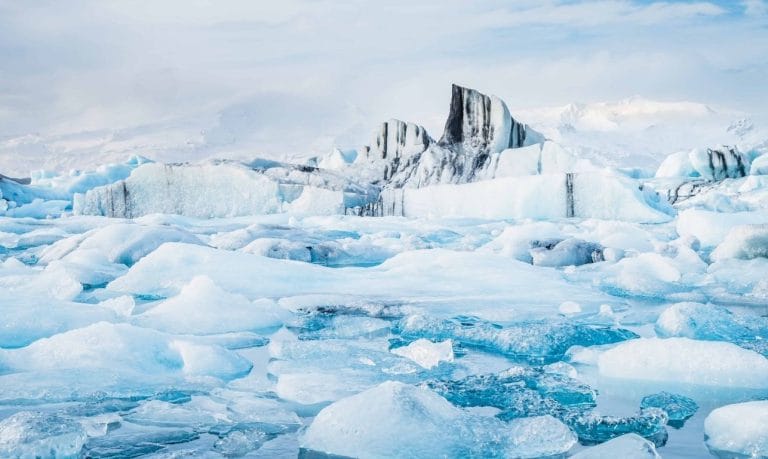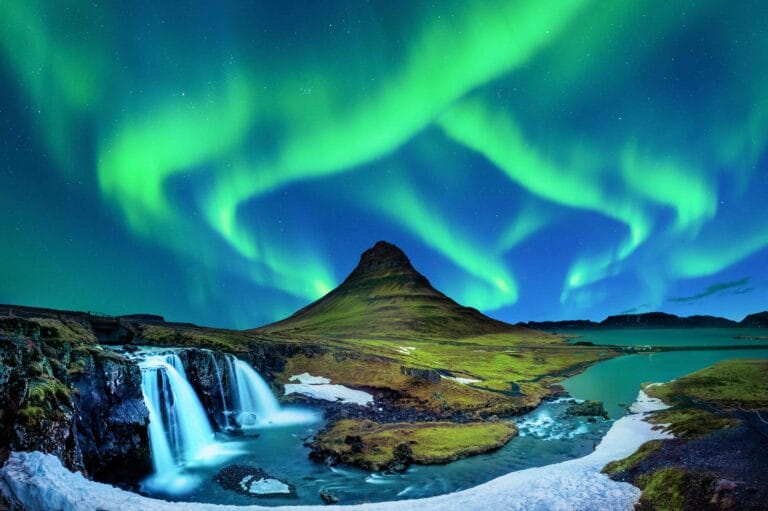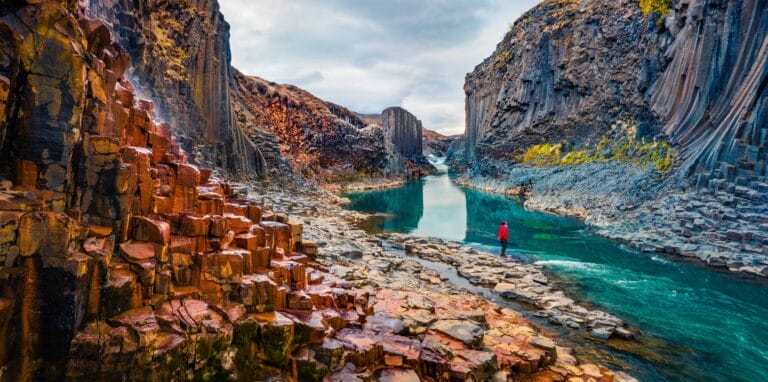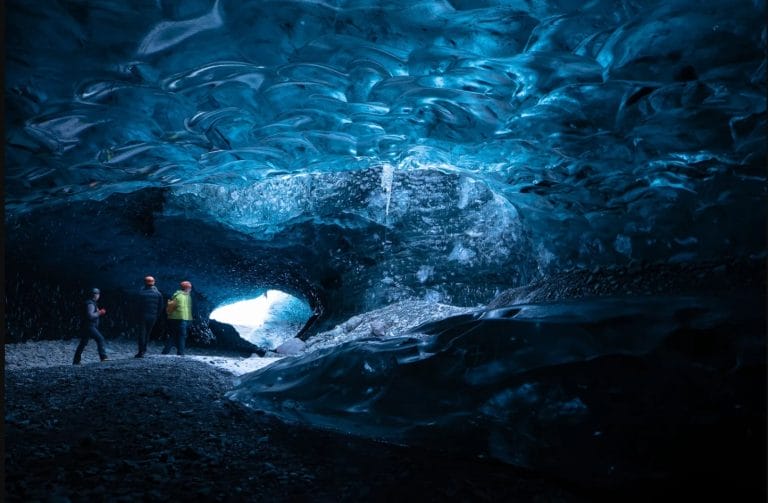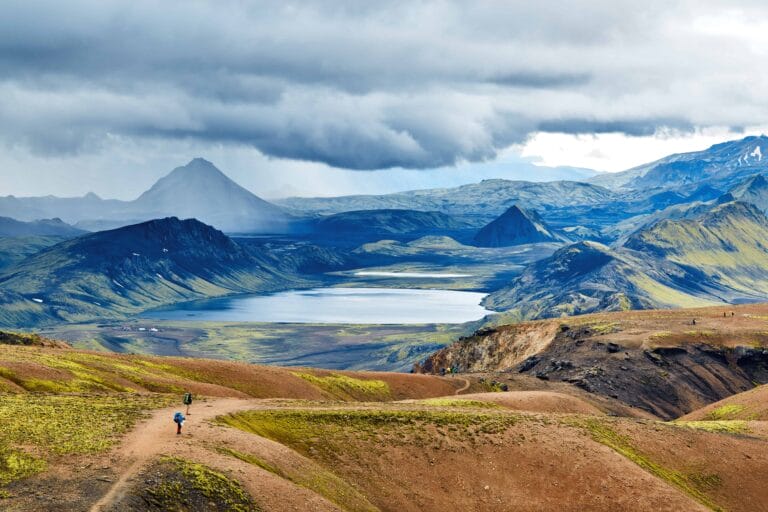Ice Cave Tours in Iceland
Explore variety of Ice Cave Tours in Iceland to find the one that fits perfectly to your trip!
Search
Duration
Starts from
Time of year
Difficulty
Group Size
Minimum age
* See on map where the ice cave tours start.
Ice Caves Tours in Iceland
Ice caves in Iceland are one of the country’s most breathtaking natural wonders, offering a rare and mesmerizing experience for adventurous travelers. These caves, typically found within glaciers, are formed by melting water carving tunnels and caverns through the dense ice. The interplay of light and ice creates a magical, otherworldly environment with shades of deep blue, turquoise, and sometimes white, depending on the density and age of the ice.
Formation of Ice Caves
Ice caves in Iceland are primarily formed by meltwater from glacial rivers during warmer months. As glaciers slowly move and compress, the weight causes the ice to become dense, pushing out air bubbles and turning it into a brilliant, transparent blue. During the summer, surface water from melting ice flows through cracks and crevices in the glacier, eroding channels and carving out tunnels within the ice. These caves expand and shift with each season, creating new formations every year.
Some caves are formed by geothermal activity, particularly in regions near volcanoes, like the famous Katla Ice Cave. In these areas, volcanic heat melts the ice, creating spectacular caves beneath the glacier. Each cave is temporary, with conditions changing annually due to weather patterns and glacial movement, making each visit unique.
Popular Ice Caves Tours in Iceland
1. Vatnajökull Glacier Ice Caves:
The most famous and largest ice caves in Iceland are found in Vatnajökull, Europe’s largest glacier. The “Crystal Cave” is one of the most popular caves, known for its strikingly clear, blue ice and cathedral-like interior. Visitors can explore massive frozen chambers with walls and ceilings that shimmer in different shades of blue, illuminated by natural light.
2. Katla Ice Cave
Located within the Mýrdalsjökull Glacier, near the active Katla volcano, this cave offers a darker and more dramatic experience. The ice here often contains layers of volcanic ash, creating a unique contrast of black streaks through the blue ice. The Katla Ice Cave offers a stark and rugged beauty, with a more mysterious atmosphere than the more traditional blue caves.
3. Langjokull Glacier Ice Cave:
Langjökull, Iceland’s second-largest glacier, features a unique man-made ice tunnel, known as the “Into the Glacier” experience. This tunnel system allows visitors to explore the interior of the glacier year-round, offering a safe and accessible way to experience the stunning blue ice from within. This adventure includes walking through ice tunnels and viewing frozen crevasses from inside the glacier.
Best Time to Visit an Ice Cave
The best time to go on an ice cave tour in Iceland is during the winter months, typically between November and March. During this period, the colder temperatures stabilize the caves, making them safe for exploration. In summer, melting ice can cause the caves to become unstable, and many of them disappear completely or are too dangerous to enter.
However, Katla Ice Cave is accessible all year and is great to visit during the summer. Another option is Into the glacier, man-made ice tunnels, that can be visited year-round due to their more controlled environment. These offer a great option for travelers visiting outside the peak winter season.
Exploring Ice Caves
Visiting an ice cave in Iceland requires a guided tour, as navigating glaciers and caves can be hazardous due to changing ice conditions, hidden crevasses, and the potential for collapses. Expert guides ensure safety and provide proper equipment on the ice cave tour, including crampons and helmets. Many tours start from locations near Jökulsárlón Glacier Lagoon or the town of Vík, depending on the cave being explored.
The experience of entering an ice cave is awe-inspiring. The thick walls of blue ice glisten as sunlight penetrates through, creating an ethereal glow. Some caves have towering domes, narrow passageways, and ice formations resembling frozen waves. The stillness inside the caves contrasts with the dynamic nature of glaciers, offering a peaceful and surreal environment.
Geological and Cultural Significance
Iceland’s glaciers, including Vatnajökull and Mýrdalsjökull, are key to understanding the island’s geology. They have shaped the landscape over millennia, and ice caves offer a window into this process. The vibrant blue hues of the ice are a result of centuries-old compacted snow, offering a visual representation of the glacier’s ancient past.
Culturally, ice caves and glaciers are significant to Icelanders. They symbolize the country’s raw, untamed nature and its ongoing battle between fire and ice. The formation of ice caves near volcanic activity, such as those near Katla, highlight Iceland’s status as a land of extremes.
Conservation and Climate Concerns
The future of ice caves in Iceland is closely tied to the health of the glaciers that form them. Climate change poses a significant threat to Iceland’s glaciers, causing them to melt at an accelerated rate. As the glaciers shrink, the availability and stability of ice caves may diminish. This highlights the importance of responsible tourism and conservation efforts to preserve these natural wonders for future generations.
Many ice cave tours now focus on raising awareness about the impact of climate change on glaciers and the broader environment, encouraging visitors to appreciate these natural formations while understanding their fragility.
Conclusion
Iceland’s ice caves offer an unforgettable experience, blending natural beauty with a sense of adventure and discovery. Whether exploring the crystal ice cave of Vatnajökull or the ash-streaked ice beneath Katla, these caves provide a unique glimpse into the heart of Iceland’s glaciers. With the help of expert guides, visitors can safely witness the stunning, ever-changing landscape of ice, an experience that is both thrilling and humbling in equal measure.
Frequently asked questions
Ice caves in Iceland are natural tunnels or caverns formed within glaciers. They are created by meltwater from glaciers in warmer months, which carves out pathways through the ice. Some ice caves are also formed by geothermal activity, where volcanic heat melts parts of a glacier. The result is a temporary, ever-changing cave structure with walls of transparent blue ice.
Some of the most popular ice caves in Iceland are:
- Vatnajökull Glacier Ice Caves: Known for its stunning “Crystal Cave” with brilliant blue ice.
- Katla Ice Cave: Located in the Mýrdalsjökull Glacier, it features a striking mix of blue ice and black volcanic ash.
- Langjökull Glacier Ice Cave: This glacier offers both natural and man-made ice caves, with the “Into the Glacier” experience being available year-round.
The best time to do an ice cave tour in Iceland is during the winter months, from November to March. During this time, the colder temperatures stabilize the caves, making them safe for exploration. In summer, many ice caves either melt or become too unstable to visit safely. Man-made ice caves, such as those in Langjökull Glacier, can be visited year-round.
Ice caves can be hazardous without proper guidance, as glaciers are constantly shifting and ice conditions can change rapidly. For this reason, visiting an ice cave should always be done with a professional guide. Tours provide safety gear like crampons and helmets, and guides monitor conditions to ensure a safe experience.
Ice caves are temporary structures that change every year due to the seasonal melting and movement of glaciers. The caves that are accessible in one winter may disappear or alter by the next, which makes every visit to an ice cave a unique experience.
No, due to the unpredictable and dangerous nature of glaciers, ice caves should only be explored with a guided tour. Guides have expert knowledge of the glacier’s terrain and can assess the safety of the caves. That is why you should always book an ice cave tour in Iceland.
It’s essential to wear warm, waterproof clothing when visiting ice caves. Layers are recommended, as temperatures inside the caves can be cold. Sturdy hiking boots with good grip are also necessary, as tours often provide crampons to help walk on ice.
You can book your ice cave tour on this website. Explore different ice cave tours and departures. If you are having problem finding the perfect tour for you, you can always reach out to one of our local experts who will help you find the best ice cave tour for your.
The brilliant blue color of the ice is due to the glacier’s dense, compact ice, which has been compressed over hundreds of years. This ice absorbs most of the light spectrum except for the blue, which is reflected back, creating the vibrant hues seen in many ice caves.
Iceland’s glaciers, and therefore its ice caves, are increasingly affected by climate change. Rising temperatures are causing glaciers to melt at an accelerated rate, which could lead to fewer ice caves and less stable formations in the future. This makes it all the more important to visit them responsibly and appreciate their fragility.
The Katla Ice Cave, located under the Mýrdalsjökull Glacier near the Katla volcano, is unique for its combination of blue ice and black layers of volcanic ash. This striking contrast creates a dark, mysterious atmosphere that sets it apart from the more brightly lit blue ice caves.
Katla Ice Cave is accessible all year as well as the Langjökull Glacier, which is a a man-made ice tunnel system, allowing visitors to explore inside the glacier throughout the year
Iceland’s ice caves offer a glimpse into the country’s unique geological landscape, shaped by glaciers and volcanic activity. These caves symbolize the ongoing clash of fire and ice that defines Iceland’s environment, with some caves like Katla formed through volcanic activity. They also provide insight into the age and density of glaciers, representing centuries of natural history.
Yes, the glaciers that form Iceland’s ice caves are shrinking due to global warming. This has raised concerns about the long-term future of ice caves. Responsible tourism and awareness of environmental impact are crucial in helping to protect these fragile natural wonders. Many tours also educate visitors on the effects of climate change on glaciers and the broader ecosystem.










